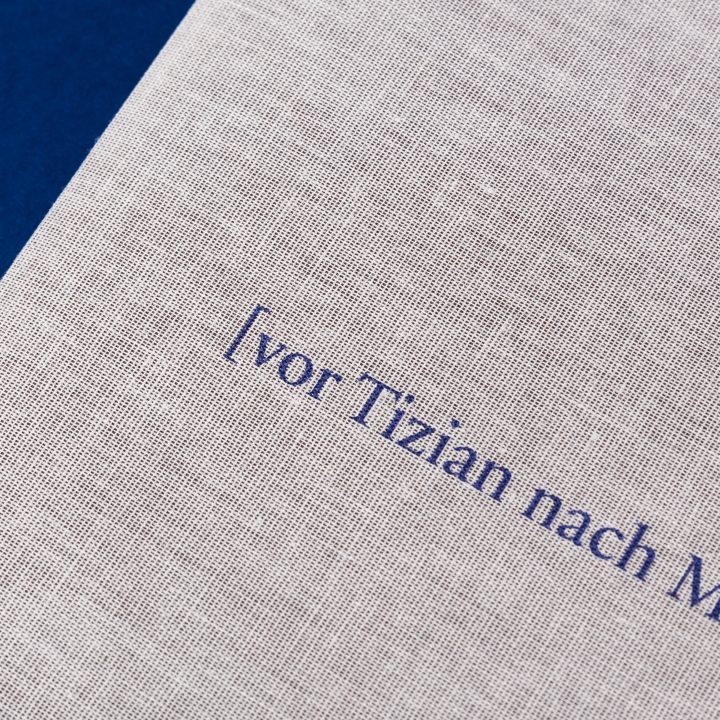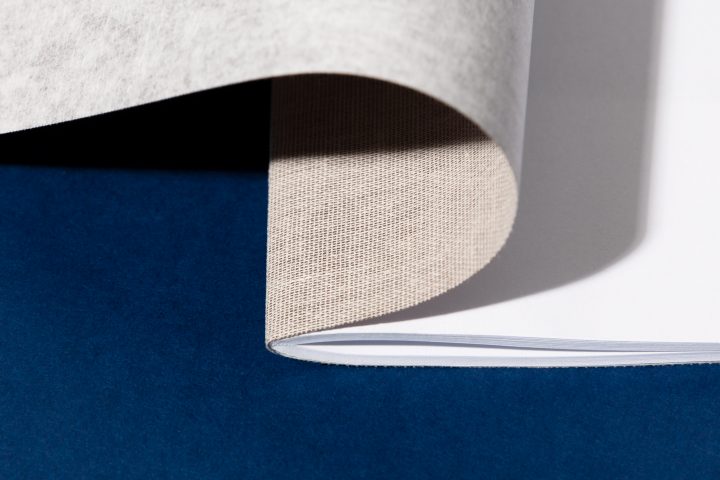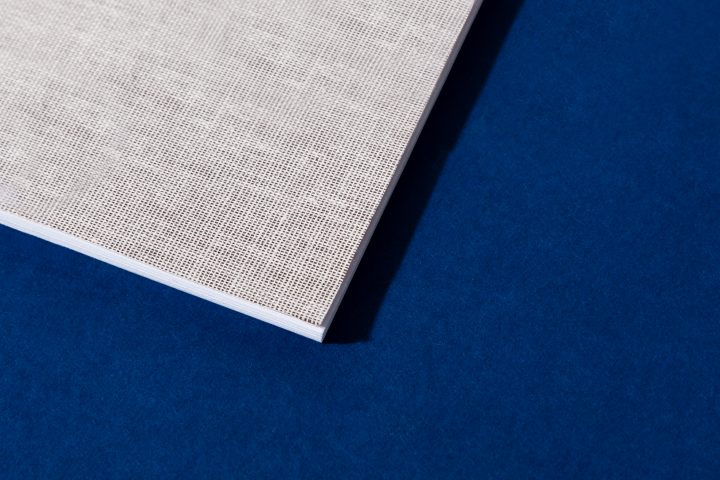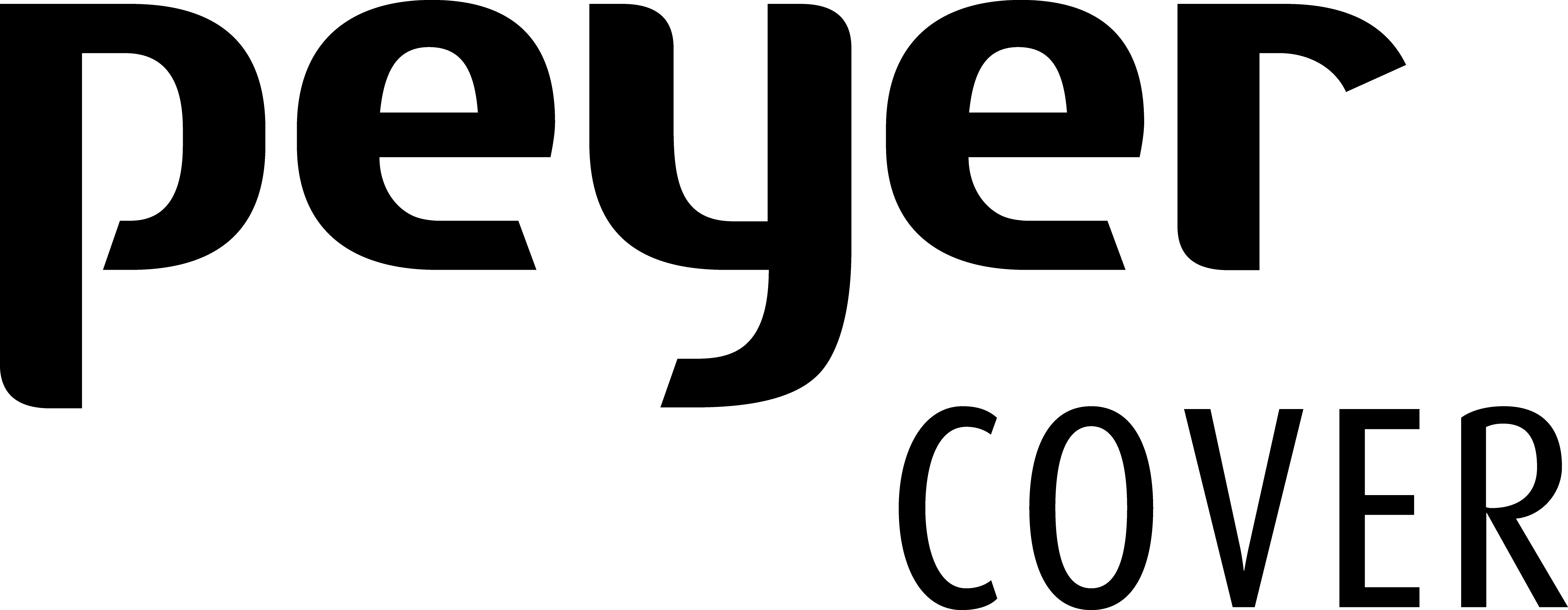Saddle-Stiching on fabric without lined board?
Cloth covers for special projects are quite commonly used nowadays. It therefore takes extraordinary materials and superior techniques to create a real jewel in the art of printing and bookbinding.
“vor Tizian nach Monet” is a masterpiece by Jochen Plogsties, Leipzig. The artist and publisher was looking for a material that would suit the multiple layers of his artistic oeuvre. The structure of the paintings should be reflected and felt in the printed work.


Printing house Druckerei zu Altenburg and design office Hug & Eberlein, Leipzig were congenial partners who gladly dared to try digital printing on fabric and saddle-stitching as binding option. All of this on loose fabric, because DOUBLESSE marmorbraun was unusually processed here without lamination on cardboard.
Laura Nierth from Druckerei zu Altenburg specifies: “At DZA, we had already produced a similar brochure in the past as quilted stitching with a fabric cover, without the fabric being laminated to paper or cardboard. With this experience of special processing, dummies with DOUBLESSE and matching content paper were made in order to simulate the final product in terms of thickness and feel.
The covers were digitally printed on our Fujifilm JetPress 720 S. Two uses of the cover on one sheet (approx. 70 x 50 cm) were not a problem and showed a superb printing result. The DZA regularly tests materials - including fabrics - to see whether they are also suitable for digital printing. DOUBLESSE can be printed digitally on the JetPress with excellent results.
For this purpose, the linen blanks were trimmed all around again before printing to create a clean and smooth edge. This ensured that protruding fibers would not cause any technical problems during the printing process.
With the saddle-stitching it was possible to work in the tried and tested technical way. The covers were creased in the binding edge beforehand so that the position would fit exactly and the cover would lay neatly on the book block. Then book block and cover were collected, stapled with 2 clips in the back and trimmed on 3 sides in the same machine.
The result is a captivating combination of classic bookbinding skills with modern digital printing.

